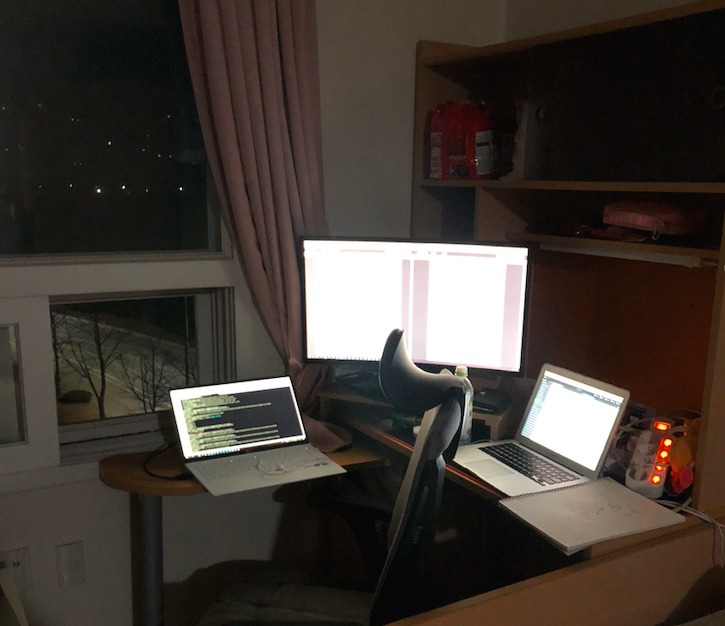목록전체 글 (39)
이것도 알아야 하네?
#include using namespace std; int cube[7] = {0}; int x, y; int offset_x[] = {0, 0, -1, 1}; // east west north south int offset_y[] = {1, -1, 0, 0}; int WithinRange(int x, int y, int N, int M) { if (x >= 0 && x = 0 && y < M) return 1; else return 0; } void Solve(int * graph, int dir, int N, int M) { int next_x, next_y; switch(dir) { case 0: // east; next_x = x + offset_x[dir]; next_y = ..
#include #include using namespace std; int offset_r[4] = {0, 1, 0, -1}; int offset_c[4] = {1, 0, -1, 0}; int Max(int a, int b) { return a > b ? a : b; } int result; int WithinRange(int r, int c, int N, int M) { if (r = 0 && c >= 0) return 1; else return 0; } void Solve(int *graph, int *visit, int r, int c, int N, int M, int cnt, int _sum) { visit[r * M + c] = 1; if(cnt + 1 == ..
지난 시간에는 이미지를 읽고, 보고, 저장하는 방법을 배웠습니다. 해당 예제를 확인하고 싶다면 ⬇⬇⬇⬇⬇⬇ OpenCV 예제 따라하기 시리즈 > 0. 이미지 읽고 쓰기 > 1. 이미지 합성 Goal 이번 시간에는 OpenCV 모듈을 이용하여, 컬러이미지를 흑백이미지로 변경하는 방법을 배웁니다. 1. Grayscale로 변환 cv2.cvtColor()함수와 cv2.COLOR_RGB2GRAY코드 값을 이용하여 이미지를 흑백 이미지로 전환할 수 있습니다. 컬러 이미지는 RGB가 각 0~255의 값을 가지므로 3개의 channel을 가지고, 흑백이미지는 0~255의 값의 크기만 가지므로 1개의 channel을 가진다. cv2.cvtColor(imageObject, ConvertCode) Returns 변환된 i..
